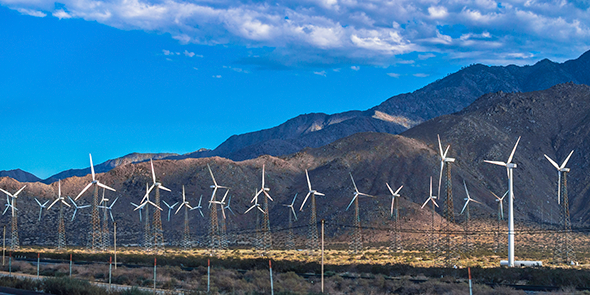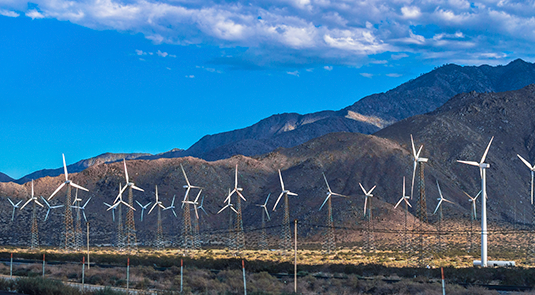The Benefits of 21st Century Infrastructure
Given California's unique industry mix of communications, information technology, clean energy, advanced materials, and other technical sectors, the state is well positioned to harness infrastructure innovations for significant state and regional benefit. This new infrastructure will create test beds from which innovative concepts, strategies, and products can be launched, which will transform the way that California's citizens and businesses interact with and utilize information and energy.


Agriculture
California grows enough food to feed the world, but has a volatile climate and experiences droughts that can last years. For example, in 2014, one of the driest years on record, the drought resulted in a net water shortage of 1.5 million acre-feet, which cost statewide agriculture $2.2 billion and the loss of 17,100 seasonal and part-time jobs.

Education
Through both technology in the classroom and online learning opportunities, 21st century infrastructure is enhancing education. In 2013, 78 percent of students and 83 percent of faculty and staff in the US brought a personal device to the classroom and used the campus network for access to the Internet. However, more than 50 percent of teachers say that slow or unreliable Internet access presents obstacles to their use of technology in the classroom. Additionally, 63 percent of public schools in the US do not have adequate Internet infrastructure to support digital learning.

Health
Better infrastructure means doctors can provide better patient care. Data captured from emerging non-invasive health-monitoring sensors, such as disposable bandages and ingestible pills, will support expanded mobile-based care, self-care, and more accurate diagnostics—all of which have the potential to both improve care and reduce costs, and can only be achieved through improved network connectivity. When paired with remote physician monitoring, these innovations could save the US healthcare system $197 billion over the next 25 years.

Public Services and Safety
Smart city infrastructure relies on connectivity and can create efficiencies in water, power, transportation, and waste management. For example, Cleveland and Cincinnati have implemented successful waste-collection programs with the help of radio-frequency identification (RFID) tags on garbage and recycling bins, cutting operating costs and increasing recycling rates.

Energy
In California, 21st century infrastructure is needed to maintain access to reliable, affordable electricity. “Smart grid” describes a next-generation electrical system that is typified by the increased use of communications and information technology in the generation, transmission, delivery, and consumption of energy. Smart grids are made possible by two-way communication technology and computer processing that has been used for decades in other industries. With this communications infrastructure, California can reduce carbon emissions and energy costs at the same time.